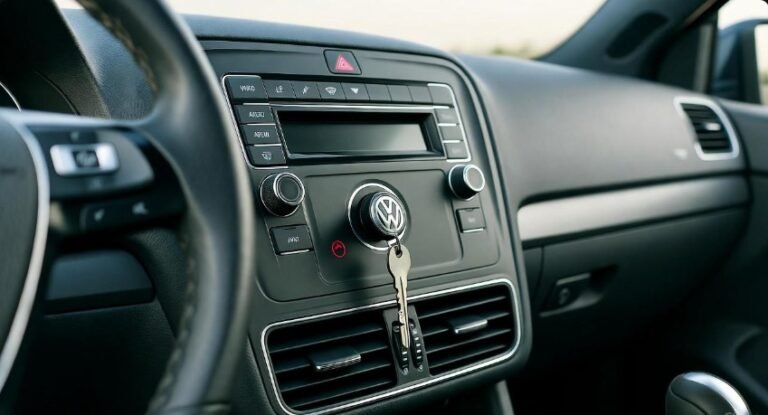Maryland Window Tint Laws [Updated, 2025] – Everything You Must Know Before Tinting Your Car
![Maryland Window Tint Laws [Updated, 2025] – Everything You Must Know Before Tinting Your Car 1 Maryland Window Tint Laws [Updated, 2025] – Everything You Must Know Before Tinting Your Car](https://aautomotives.com/wp-content/uploads/2025/10/Maryland-Window-Tint-Laws-Updated-2025-–-Everything-You-Must-Know-Before-Tinting-Your-Car.jpg)
Imagine you’ve just had your car windows tinted. The sleek finish gives your ride a modern, luxurious look, and you finally feel relief from the blinding summer glare. But as you’re driving through downtown Baltimore, a flashing light appears in your rearview mirror — it’s law enforcement. The reason? Your window tint is too dark.
That’s a situation no driver wants to face. Maryland window tint laws were first introduced back in 1995 to balance comfort, style, and safety. Since then, the rules have evolved to ensure that visibility isn’t compromised for the sake of aesthetics. Knowing the legal tint percentage in Maryland can save you from unexpected tickets, expensive repairs, and even vehicle inspection orders.
In this updated 2025 guide, we’ll break down every important detail about Maryland tint regulations — from legal VLT percentages to reflection limits, medical exemptions, and penalties. Whether you drive a sedan, SUV, or van, this article will help you understand exactly what’s allowed and what’s not — in the simplest possible terms.
Understanding Window Tint Basics: The Science Behind the Shade
Before diving into the legalities, let’s make sense of a few terms you’ll often hear when discussing tinting. Two of the most important are Visible Light Transmission (VLT) and Visible Light Reflection (VLR).
-
VLT (Visible Light Transmission): This tells you how much light can pass through your window. A higher VLT percentage means more light comes in. For example, 70% VLT means the film lets in 70% of the light — making it relatively lighter.
-
VLR (Visible Light Reflection): This measures how much light bounces off the surface of your tint. A high VLR gives a shiny or mirror-like finish, while a low VLR looks more matte.
Think of it this way: VLT affects what you see from inside, and VLR affects what others see from outside. Both factors are key in determining whether your tint complies with Maryland’s 2025 tint laws.
These laws exist not just for aesthetics but for safety — too dark a tint can make it hard for police to see inside a vehicle, and excessive reflection can cause glare that blinds other drivers.
Legal Window Tint Darkness in Maryland (Updated 2025)
When it comes to window tint darkness, Maryland follows specific VLT limits for different vehicle types. It’s not one-size-fits-all — sedans and multi-purpose vehicles (like SUVs and vans) are treated differently.
Let’s look at the breakdown:
For Passenger Vehicles (Sedans):
-
Windshield: You can use a non-reflective tint on the top 5 inches or above the AS-1 line, but it must allow at least 35% of light through.
-
Front Side Windows: Must allow 35% or more VLT.
-
Back Side Windows: Must allow 35% or more VLT.
-
Rear Window: Must also allow 35% or more VLT.
For Multi-Purpose Vehicles (SUVs and Vans):
-
Windshield: The same rule applies — non-reflective 35% VLT tint allowed on the top 5 inches or above the AS-1 line.
-
Front Side Windows: Must allow 35% or more VLT.
-
Back Side and Rear Windows: Here’s the perk — you can go as dark as you like.
So, if you’re driving a van or SUV and love that limo-style privacy tint, you’re in luck. But for sedans, the rules are stricter, and anything below 35% can result in fines.
Quick Tip:
If you’re not sure what percentage your tint is, use a VLT meter or visit a certified tint shop. Guesswork can get expensive if a law officer checks it with their own meter and finds your tint illegal.
The Importance of Staying Within Legal VLT Limits
You might wonder, “What’s the big deal if my tint is a bit darker?” The truth is — it’s not just about looks. Darker tints can make night driving difficult, reduce side visibility at intersections, and prevent eye contact between drivers, which is crucial in preventing accidents.
Maryland’s window tint laws are designed to balance privacy with safety. The 35% rule ensures enough visibility for drivers, passengers, and law enforcement.
Another factor worth noting is that tint darkness can fade over time. So, if your tint was legal a few years ago but looks darker today, it might be time for a checkup or replacement.
Legal Window Tint Reflection in Maryland
Now that we’ve covered how dark your tint can be, let’s talk about reflection — or how shiny your windows are. Maryland law sets strict limits on reflectivity to prevent mirror-like surfaces that can distract other drivers.
For Passenger Vehicles (Sedans):
-
Front Side Windows: Must not have any metallic or mirrored appearance.
-
Back Side Windows: Also cannot have metallic or mirrored finishes.
For SUVs and Vans:
-
Front Side Windows: No metallic or mirrored tint allowed.
-
Back Side Windows: Again, no reflective or mirror-like tint is permitted.
In simpler terms, keep it natural. A mild sheen is fine, but if your car looks like a disco ball in the sunlight, that’s a red flag.
Reflective tints might seem attractive because they can reduce heat, but Maryland law prioritizes visibility and safety. Many drivers get caught off guard because reflective tints look subtle in shade but shine brightly under direct light. Always check with a certified installer before you apply any reflective film.
Why Maryland Restricts Reflective and Colored Tints
Ever wondered why Maryland tint laws prohibit certain colors or mirror-like tints? It all comes down to visibility and safety. Law enforcement officers need to see inside vehicles for safety reasons, and drivers need to communicate visually — a nod, a glance, or eye contact can prevent confusion on the road.
Colors like red, yellow, and amber are specifically banned in Maryland because they can mimic emergency lights or distract other drivers. Plus, these colors can interfere with nighttime visibility, creating unnecessary hazards.
Using reflective or colored films may seem like a harmless customization, but in reality, it can put you and others at risk. Following Maryland’s tint color restrictions ensures that your vehicle remains compliant and safe for everyone on the road.
Other Maryland Window Tint Rules You Must Follow
Apart from VLT and VLR, Maryland enforces several additional rules that every car owner should know before tinting their windows.
Here are some key regulations you should keep in mind:
1. Side Mirrors Requirement
If your rear window is tinted, you must have dual side mirrors installed. This ensures you can still see behind your vehicle clearly. It’s a simple rule but often overlooked — and skipping it can lead to a ticket.
2. Restricted Tint Colors
As mentioned earlier, red, yellow, and amber tints are strictly prohibited. Stick with neutral shades like gray, black, or charcoal. These not only comply with the law but also look clean and elegant.
3. Manufacturer Certification
Maryland law requires that window tint manufacturers certify their films for sale in the state. This ensures that the tint meets legal standards for light transmission and reflectivity.
When getting your car tinted, ask your installer whether the film is state-certified. Using uncertified film can lead to penalties, even if your tint percentage appears legal.
4. Tint Stickers (Optional but Helpful)
While Maryland doesn’t require tint identification stickers, it’s wise to have one placed between your glass and film. It shows your tint is legal and helps you avoid unnecessary stops by law enforcement.
Pro Tip:
Ask your tint shop to provide documentation or a small compliance label after installation. It’s an easy way to protect yourself if there’s ever a question about your tint legality.
Medical Exemptions for Window Tint in Maryland
Maryland’s window tint laws do recognize that some individuals may have medical conditions requiring darker tints for health reasons.
If you have a condition that makes you sensitive to sunlight — such as lupus, photosensitivity, or other skin disorders — you can apply for a medical exemption.
To qualify, you’ll need:
-
A signed letter from a licensed physician, including your name, date of birth, and medical reason for tinting.
-
The letter must specify that tinted windows are medically necessary.
-
You must carry this documentation in your vehicle at all times.
This exemption allows you to legally use darker tints than typically permitted. However, law enforcement may still verify the authenticity of your exemption, so it’s crucial to keep your documents updated and on hand.
Medical exemptions make Maryland’s tint laws more humane — they recognize that for some drivers, tinting isn’t just an aesthetic choice; it’s a matter of health and comfort.
The Penalties for Violating Maryland Window Tint Laws
No one likes fines — especially when they can be easily avoided. In Maryland, violating window tint regulations is treated as a traffic offense.
If you’re caught with illegal tint, here’s what might happen:
-
You’ll likely receive a citation or ticket from law enforcement.
-
You may be issued a Safety Equipment Repair Order (SERO), requiring you to have your tint inspected at a certified facility.
-
If your tint fails inspection, you’ll have to remove or replace it and show proof of compliance.
-
Ignoring a SERO can lead to additional fines or even vehicle impoundment.
Common Mistake Alert:
Many drivers think removing illegal tint is optional after getting a ticket — it’s not. Maryland police can issue multiple citations if the problem isn’t fixed, and repeated offenses can hurt your driving record.
How Maryland Enforces Window Tint Laws
Understanding the enforcement process in Maryland can save you both time and money. Police officers are equipped with tint meters to measure the VLT percentage of your windows during traffic stops. Unlike guessing or relying on the installer’s word, these devices give accurate readings on the spot.
If an officer finds your tint too dark or reflective, they may issue a citation immediately. Often, they will also provide a Safety Equipment Repair Order (SERO), which mandates that you have your vehicle inspected at a certified facility to ensure compliance. This inspection must typically be completed within a specified timeframe, usually 15 to 30 days. Failure to comply may lead to additional fines, repeated tickets, or even temporary vehicle impoundment. The enforcement process emphasizes that compliance isn’t optional — Maryland takes window tint regulations seriously to maintain safety for all road users.
Tips for Choosing Legal Window Tints in Maryland
Choosing a tint that is both stylish and legal can be tricky, but following these tips makes it easier:
-
Always check VLT percentages: Confirm that your tint allows at least 35% light through the front and back windows if you drive a sedan. For SUVs and vans, back and rear windows can be darker.
-
Avoid reflective or metallic films: Maryland law prohibits mirror-like finishes on all vehicle windows.
-
Use certified films: Ensure the tint you purchase is state-certified. Ask your dealer or installer for documentation.
-
Stick to neutral colors: Gray, black, and charcoal are your best bets. Avoid red, yellow, or amber tints.
-
Consider medical exemptions if needed: For those with photosensitive conditions, a physician’s letter can legally allow darker tint.
Following these simple precautions not only ensures you comply with the law but also protects your investment in your vehicle and helps avoid fines.
Common Scenarios and FAQs About Maryland Window Tint Laws
Here are some practical scenarios and frequently asked questions to help clarify common concerns:
1. Can I tint only my back windows darker than 35% if I drive a sedan?
No. Maryland law permits only SUVs and multi-purpose vehicles to have darker back and rear windows. Sedans must maintain 35% VLT or higher on all windows except the top 5 inches of the windshield.
2. Are metallic or mirrored tints legal on SUVs?
No. Maryland law prohibits metallic or mirrored finishes on both front and back windows, regardless of vehicle type.
3. Do I need a sticker for my tinted windows?
Maryland does not require stickers, but placing a certification sticker between the glass and tint film is highly recommended. It serves as proof of compliance during traffic stops.
4. What happens if I get pulled over for illegal tint?
You may receive a citation and a Safety Equipment Repair Order (SERO). Your vehicle must be inspected at a certified facility to verify that your tint meets legal standards. Failure to comply can lead to additional penalties.
5. Can I get a medical exemption for tinting?
Yes. With a valid doctor’s letter stating the medical need, you can apply for a medical exemption. Always carry this documentation while driving.
6. Are there penalties for using prohibited tint colors?
Yes. Using red, yellow, or amber tints can result in fines, citations, and orders to remove or replace the tint.
7. How do I measure my window tint VLT?
A certified installer or law enforcement officer can measure it with a VLT meter. Some advanced DIY tools exist, but accuracy varies.
8. Can a tint installed years ago still be illegal today?
Yes. Tint can degrade, fade, or change over time, which may make it non-compliant. Periodic checks are recommended.
Summary Table: Maryland Window Tint Limits (2025)
| Vehicle Type | Windshield | Front Side Windows | Back Side Windows | Rear Window | VLR Restrictions |
|---|---|---|---|---|---|
| Passenger Vehicles (Sedans) | Non-reflective 35% above AS-1 line or top 5 inches | Up to 35% | Up to 35% | Up to 35% | No metallic/mirror |
| Multi-Purpose Vehicles (SUVs/Vans) | Non-reflective 35% above AS-1 line or top 5 inches | Up to 35% | Any darkness | Any darkness | No metallic/mirror |
This table simplifies Maryland’s window tint regulations at a glance. Remember that compliance isn’t just about avoiding fines — it’s about keeping visibility clear, maintaining safety, and protecting your investment in quality tinting.
Final Thoughts: Staying Safe and Legal
Tinting your car windows in Maryland is more than just a cosmetic upgrade — it’s a legal responsibility. Following the Maryland window tint laws [2025 update] ensures that your vehicle is safe, stylish, and compliant.
From sedans to SUVs, every vehicle type has specific VLT and VLR limits. Avoiding prohibited colors, using certified films, and adhering to the dual side mirror requirement are all key to staying on the right side of the law. For drivers with medical needs, exemptions provide a legal pathway for darker tints.
Remember, penalties for non-compliance can include tickets, Safety Equipment Repair Orders, and fines — which can escalate if ignored. The best approach is to choose your tint wisely, verify it with certified tools, and maintain documentation like certificates or medical letters.
By understanding the nuances of Maryland’s window tint regulations, you can enjoy the benefits of tinted windows — glare reduction, UV protection, and enhanced privacy — without risking legal trouble. Treat your car like an investment, and follow the rules to drive confidently and safely.
Disclaimer:
This article is intended for informational purposes only and should not be considered legal advice. Maryland window tint laws may change over time. For specific legal guidance, always consult a licensed attorney or local authorities before tinting your vehicle.






